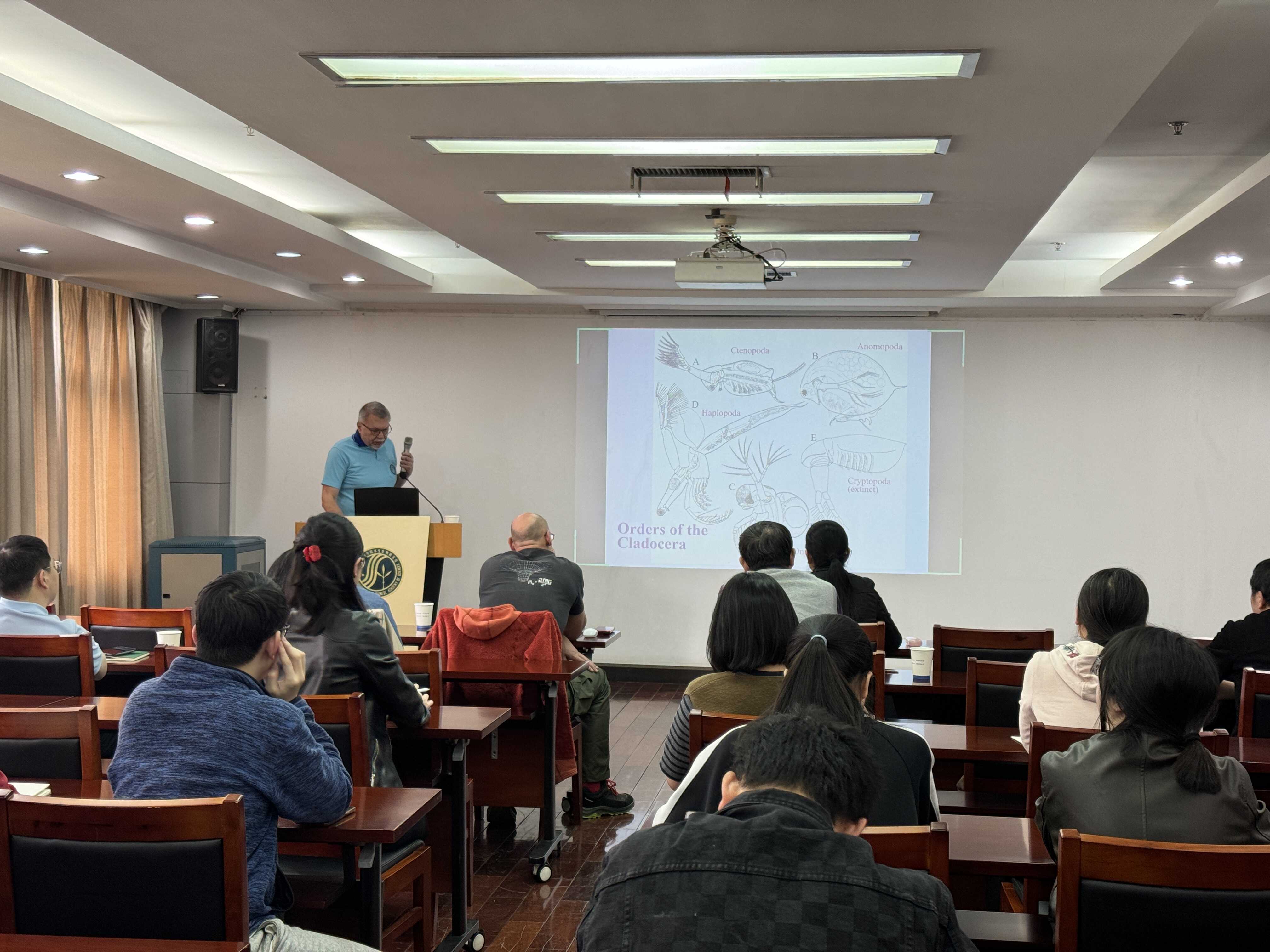
Newsroom
Professor Alexey Kotov from Institute of Ecology and Evolution, Russian Academy of Sciences Visits IHB

Prof. Alexey Kotov from the Institute of Ecology and Evolution, Russian Academy of Sciences, visited IHB on April 7, 2025. (Credit: IHB)
On April 7, 2025, Professor Alexey Kotov from the Institute of Ecology and Evolution, Russian Academy of Sciences, visited the Institute of Hydrobiology (IHB) of the Chinese Academy of Sciences, for an academic exchange. During his visit, Professor Kotov delivered two insightful presentations: “Fossil Water Fleas: From the Palaeozoic to the Pleistocene” and “Biological Invasions of Water Fleas (Crustacea: Cladocera) to (and from) the Caspian Sea as a Continuation of the Long-Term and Complex Evolutionary History of Some Taxa.”
In the morning session, Professor Kotov presented fossil evidence regarding the geographic distribution patterns of cladocerans from the Paleozoic to the Pleistocene, highlighting their relationship with Earth’s activity, climate changes, and other large animals from the same era, such as the mammoth. Additionally, he discussed the complex, long-term evolutionary process of biological invasions in the Caspian Sea, emphasizing how water fleas have adapted and moved across ecosystems over time.
On the afternoon of April 7, IHB held an international cooperation seminar with Russian colleagues. The seminar focused on various aspects of aquatic biodiversity research and innovative scientific advancements. Topics included the history of collaborations between IHB and Russian institutions, talent exchange programs, and the latest progress in intelligent monitoring of plankton.
Professor Kotov, a distinguished scientist and a member of the Russian Academy of Sciences, expressed his gratitude for IHB's early contributions to cladoceran taxonomy research and reiterated his hope for more cooperation in talent development and academic exchanges in the future. This visit further strengthens the international collaboration between the two institutions and paves the way for future research partnerships in aquatic biodiversity and evolutionary studies.